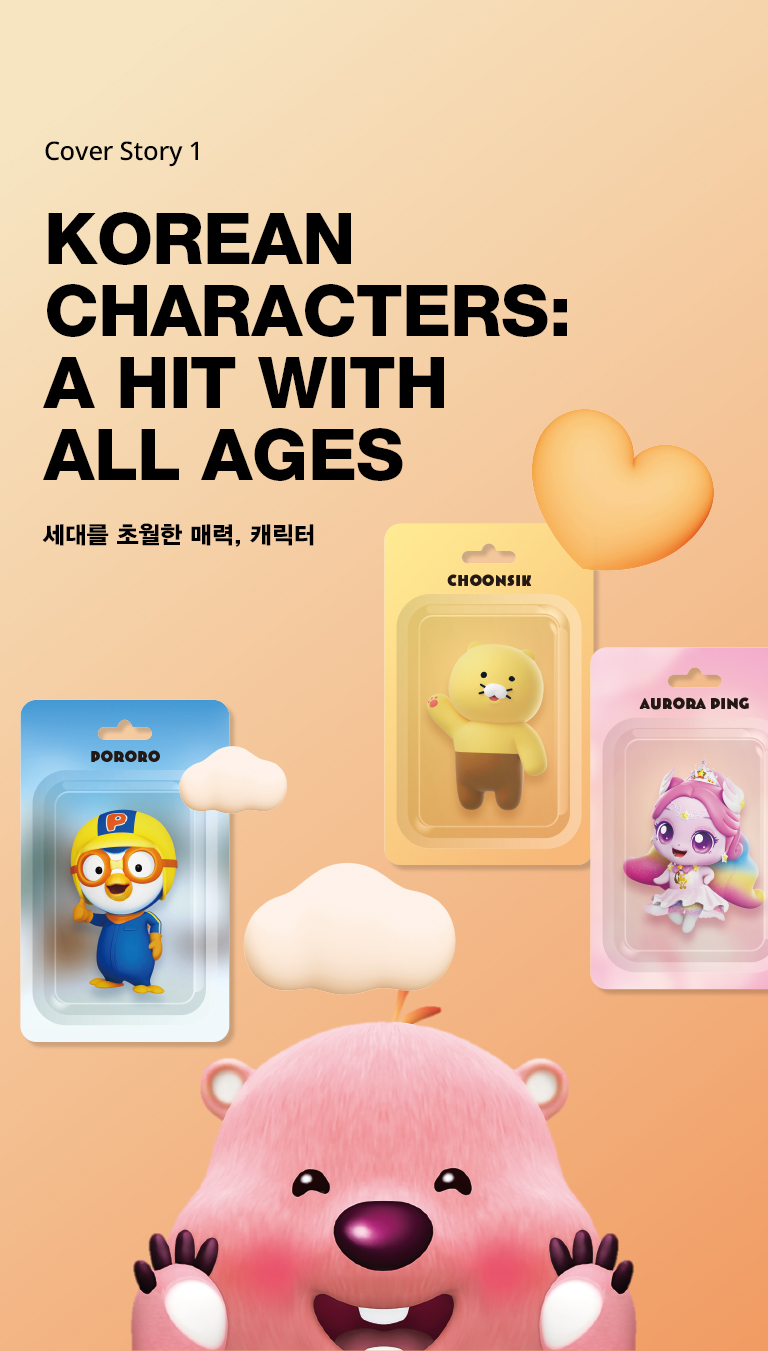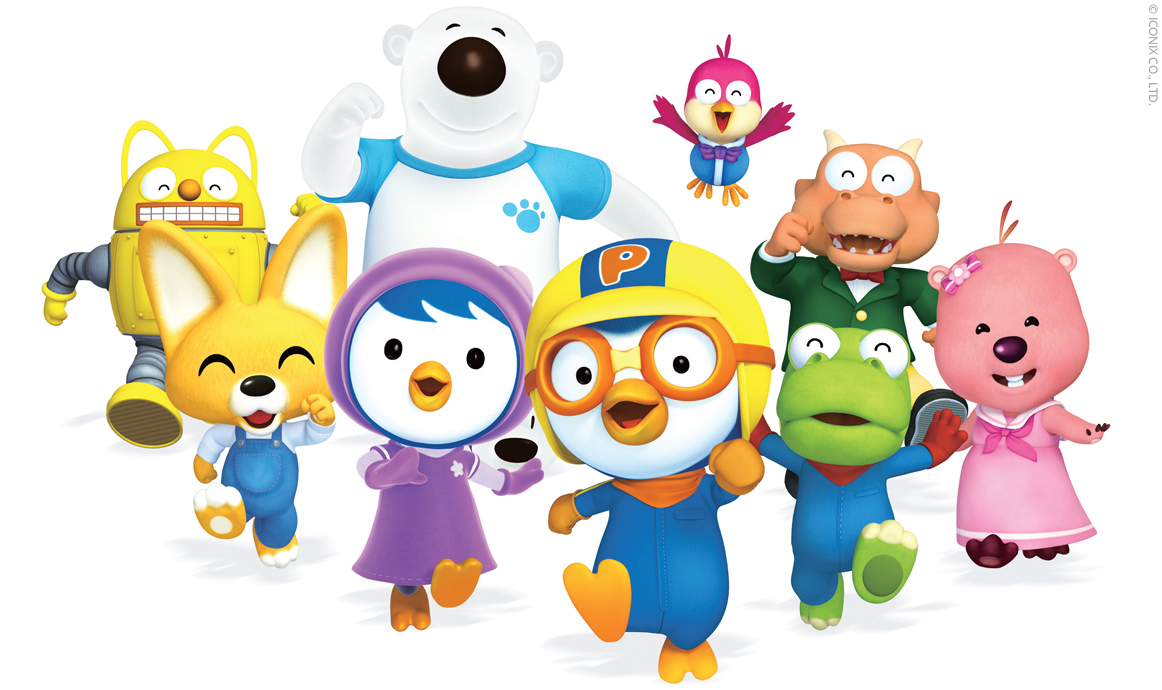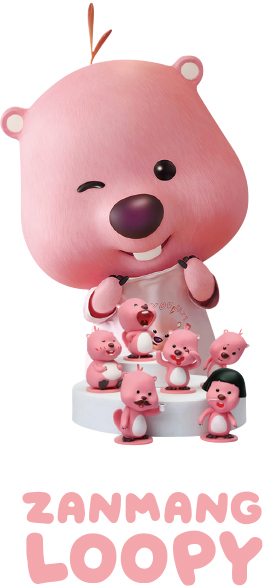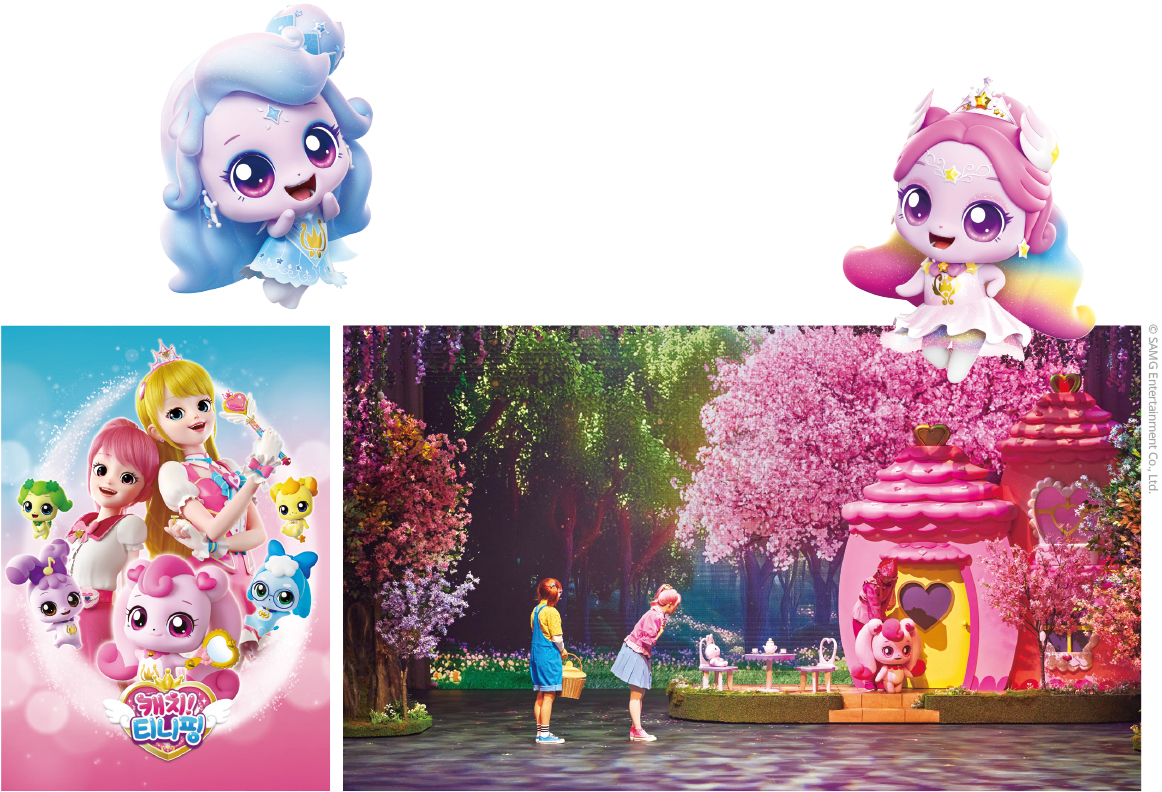
Animated characters: they’re no longer just for kids. Men and women, young and old—Korea’s characters are adored across the board. This article explores the powerful potential just waiting to be unlocked from the character industry.
캐릭터는 더이상 어린이들의 전유물이 아니다. 어른과 아이, 남녀를 불문하고 모두의 사랑을 받고 있는 한국의 캐릭터를 살펴보자. 그 안에는, 한국 캐릭터가 펼쳐보일 무한한 가능성이 담겨 있다.
Writer. Sung Ji Yeon
In 2003, Korean kids unofficially elected a “president” for life—Pororo the playful penguin. Bursting onto screens in animated episodes inspired by everyday adventures, Pororo quickly waddled into the hearts of children across the nation with his lovable crew: Crong the dinosaur, Petty the penguin, Loopy the beaver, Eddy the fox, Rody the robot, Poby the polar bear and Harry the hummingbird.

Soon after the cartoon’s premiere, Pororo gained immense popularity in Korea. It was impossible to find a child (or a parent, for that matter) who wasn’t familiar with the little penguin. Even children with the shortest attention spans would sit spellbound when Pororo appeard on screen, with many mimicking his behavior and repeating his lines. That was when Koreans began to joke about Pororo’s presidential sway over children’s minds with the slang term Ppotongnyeong, combining “Pororo” with the Korean word for “president” (daetongnyeong).
There are a number of reasons why Pororo has become so popular. First, the main character is a penguin, which is more unique than a commonplace animal like a cat or dog. Second, the episodes let the “kids” (Pororo and his animal friends) solve their problems without adult intervention. Another big factor contributing to the cartoon’s popularity is that the episodes aren’t about defeating a villain or teaching lessons, but address everyday occurrences that resonate with young viewers, allowing them to envision these situations happening in their own lives.

Even the most beloved characters usually fade with time—but not Pororo. With remarkable staying power, this little penguin continues to charm new generations. Today, he remains one of Korea’s most iconic and enduring cartoon stars. Over a thousand episodes have been produced in the cartoon so far; its YouTube videos rack up more than a billion views each month. In a Korean government survey of popular animated characters, Pororo has ranked in the top three for the last three years.
Pororo’s friend Loopy has inspired the spinoff character Zanmang Loopy (zanmang means “mischievous”), which borrows the beaver’s quirky expressions and voice for the latest trends, capturing the hearts of young consumers in Korea and around the world.
Pororo enjoyed a meteoric rise at a time when the creation and consumption of cartoons and animated characters weren’t at their present level. Going forward, it’s safe to assume that kids will keep idolizing the playful penguin, and that adults will continue to see him as a stirring symbol of the Korean animation and animated character industries.

KAKAO FRIENDS first appeared in 2011 on KakaoTalk, the messaging app used by a majority of Koreans. There’s a story behind the design of these characters that enliven conversations on KakaoTalk. Each one is intentionally designed to appear just a bit vulnerable—making them instantly relatable—and packed with expressive features that help users convey their emotions more vividly.
As more people adopted the KAKAO FRIENDS emojis for online chatting, the characters spread into the offline world. Kakao has licensed them to numerous brands for household goods, food and fashion, while also holding exhibitions. KAKAO FRIENDS have been adapted into children’s cartoons. Beloved characters of yesteryear typically emerged from story-driven cartoons, but KAKAO FRIENDS made a splash with only the thinnest of backstories. They have branched out in novel directions, presenting a new paradigm for the Korean character market.
KAKAO FRIENDS also form a highly expressive system of communication that’s immediately recognizable to anyone who has used KakaoTalk. Since Koreans of all ages send KAKAO FRIENDS emojis to convey their emotions, these characters have naturally become an integral part of our daily routines. That’s why it’s exciting to imagine what’s next for KAKAO FRIENDS.

First broadcast in 2020, “Catch! Teenieping” follows Romi, the princess of the Emotion Kingdom, who is searching for fairies called Teeniepings scattered around Earth. Their personalities are baked into their names—for instance, Moseyping represents laziness.
Now more popular than ever, “Catch! Teenieping” has produced five seasons so far. A film “Heartsping : Teenieping of Love” released in 2024 ranked fourth among animations that year and achieved the second-best box office performance of any Korean animated feature. A musical based on this series filled more than 90% of seats at its first performance and continues touring other parts of the country. It has also been exported to other nations, enchanting children in China and Japan.
Adult viewers are a key factor behind the show’s popularity, as “Catch! Teenieping” appeals to people of all ages. Another big draw is the adaptable naming system: by attaching “ping” to their names, children can feel like part of the series. Grownups have also joined in, expressing their own situations through humorous memes such as “Off-to-work-ping” and “Broke-as-a-joke-ping.” The producers encourage this trend by regularly posting adult-friendly memes on their official social media. The series continues to break new ground by recruiting idol singers for the soundtrack.
Ultimately, “Catch! Teenieping” shows that animated characters aren’t just for kids but can bridge generations. It also proves that adults can be active consumers in the Korean animation and character markets, enjoying these works on their own terms. In short, it has significantly raised industry standards.
